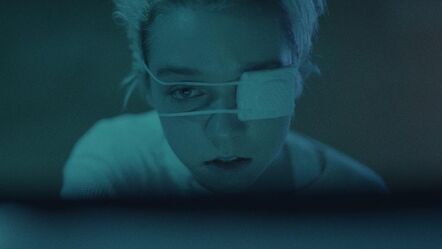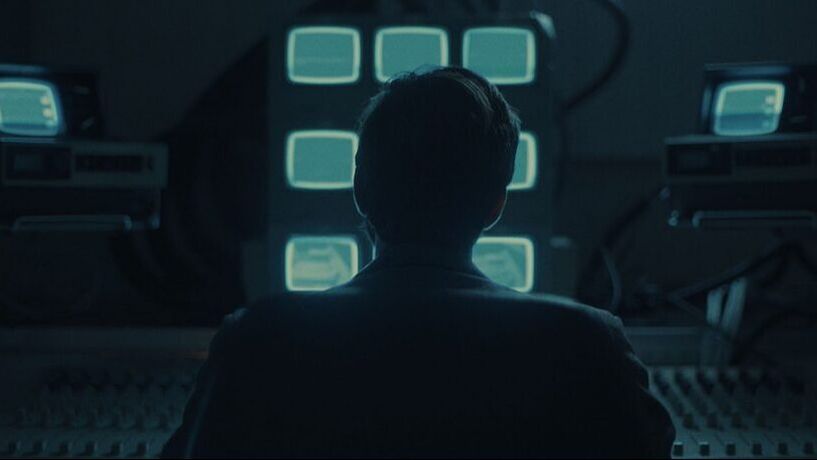 If any of you have seen or heard of the film The Nightmare, you will be well acquainted with the condition known as sleep paralysis. In Anthony Scott Burns’ (Our House) newest feature film, the director dreams of expanding on the current research of sleep paralysis by taking us into the minds where the nightmares lurk... ...The sleep disorder appears throughout history and across multiple cultures, and always at the center of these now-famous nightmares stand dark shadow people with glowing eyes. The dreams hold some slight variations unique to the sufferer, but largely people universally find themselves stalked by the same late-night demon. The psychotherapist Carl Jung never specially discussed the issue of sleep paralysis; however, he did address the importance of dreams and how our unconscious minds become gateways to not only ourselves, but also universal meaning. Therefore, if people all over the world witness the same figure while they sleep, then perhaps harnessing these shadowy figures would open a door into humankind. Or something more hellish. WARNING: IF YOU SUFFER FROM SLEEP PARALYSIS, THIS FILM MAY TRIGGER IT Come True begins in REM sleep as we see mesmerizing images on a flickering screen morph into the title card, only to cut to black where we eventually emerge into a shadowy horrorscape. The opening sequence serves as a peek into the nightly hell of Sarah (Julia Sarah Stone), an 18-year-old runaway. Throughout the first act the actress wears a glazed expression; the character seems to exist between the realms of wide awake and nightmare. Her insomnia causes her to float through her day as she struggles to stay awake and find a place to sleep. The main character in Sarah’s nightmares is a faceless human-shaped shadow. For those who suffer from sleep paralysis, the shadow figure might seem a bit familiar—and more than a bit terrifying. Fueling herself on coffee to stave off the horrible dreams and (most likely) the cold from sleeping outside so often, Sarah’s life becomes just one long moment of survival. Always fleeing from the monsters in her head or the one in her family. Eventually, the dead-eyed Sarah stumbles upon a paid sleep study and signs up; a warm bed and some spending money sounds perfect for a homeless insomniac. Sarah arrives at the university for the study and finds a soothing and professional environment where participants and researchers alike establish a calming rapport. Slow and purposeful movements create an ASMR-inducing scene as the experiment participants prepare for the first night. Dr. Meyer (Christopher Heatherington), the head of the experiment, provides a scientific voiceover as he describes each stage of sleep and its accompanying traits. At this point, the purpose of the study is a mystery, but the viewer can assume the researchers expect sinister results because after just a few nights the findings becomes a triggering experience. The subtleness of the scares might be missed by some, so put down your phone and be wary of the shadows. When a scene seems to capture the mundane, just remember terror will be hiding in plain sight. The inspiration for the film stems from the director’s personal experience with sleep paralysis. Burns’ interest in the topic is mirrored in the initiatives of the young doctor Riff (Landon Liboiron). As Sarah grows closer to the curious Riff, she also begins to question the hypothesis driving the sleep experiment. Why do people all experience the same nightmare? Are they researching the phenomenon to discover more about the human psyche? The technology used in the study allows for the researchers to witness and capture the images experienced by the participants, but are the scientists trying to merely witness the terror? Or harness it? Visually, the director instills a sense of uncertainty on where the world ends and the nightmare begins. The slow music with deep tones and low notes teases out the sensation of dreams and, paired with the subdued and washed-out colors, the film eases the viewer into an almost sleep-like trance. The film goes beyond showing realistic depictions of sleep paralysis, managing to create a sense of waking sleep. The nightmare imagery will haunt you, so brush up on your Jungian archetypes and lie back and try to relax. Come True is atmospherically powerful, and hopefully also a major nod to the acting prowess of Stone, but Burns’ effort to contain the nightmares loses focus with an unnecessary romance and a really underwhelming ending, so I guess not all dreams come true. Come True comes to select theaters and VOD from IFC Midnight March 12th. By Amylou Ahava Please consider joining us in celebrating Women in Horror Month by donating to CineFemme at https://cinefemme.net/donate/
0 Comments
Leave a Reply. |
Archives
March 2023
|


 RSS Feed
RSS Feed